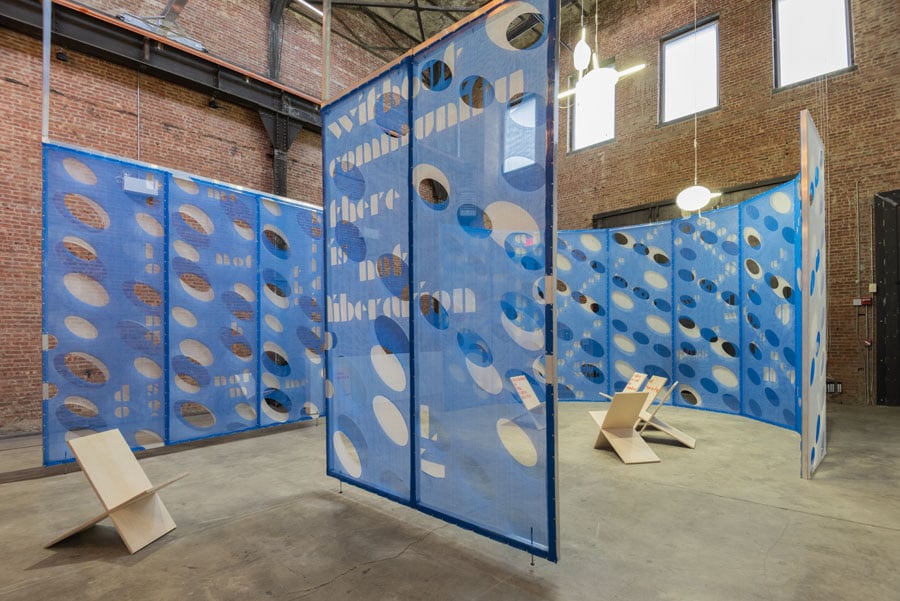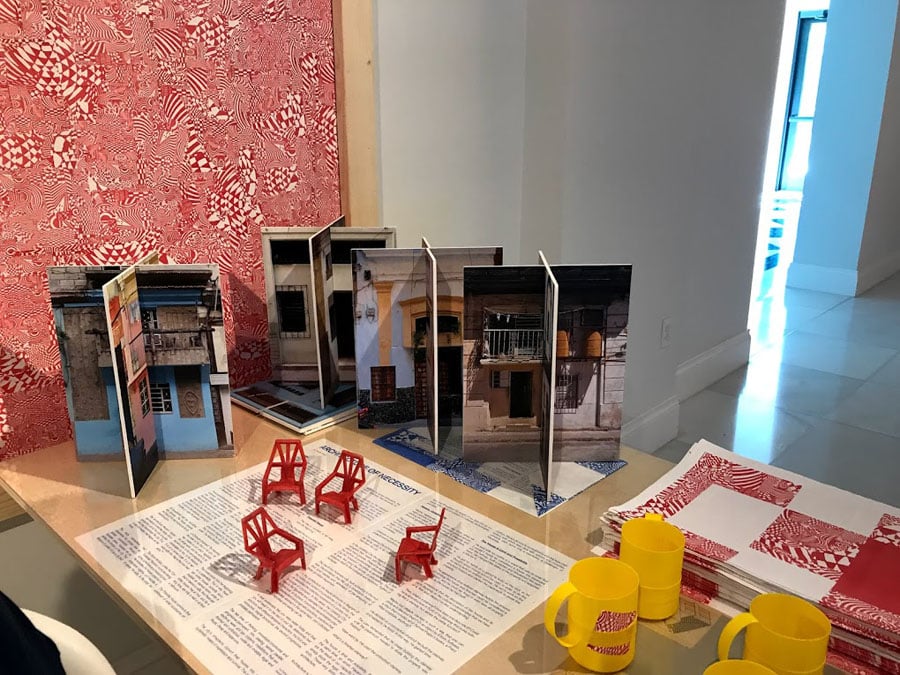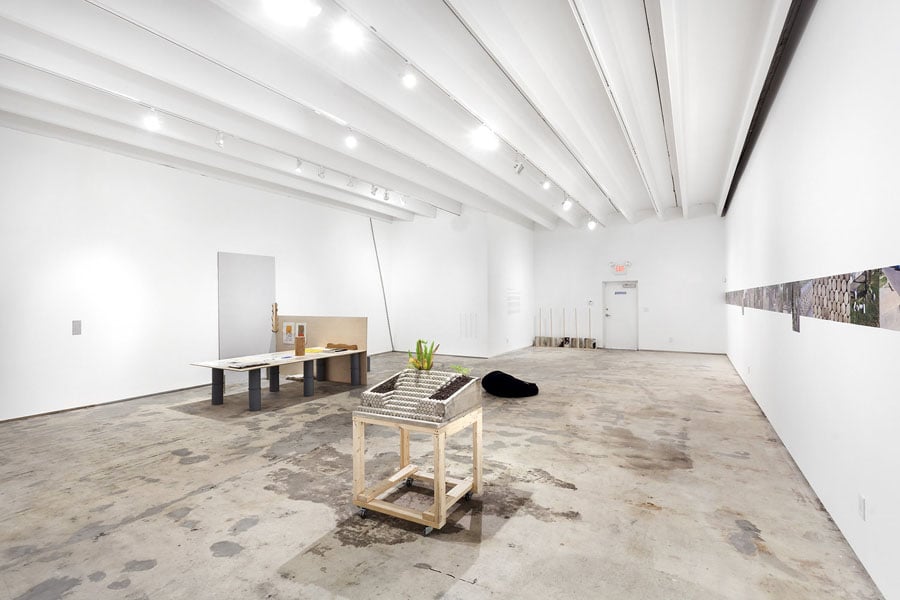
May 22, 2020
Hialeah, Florida Inspires Soulful Materiality in this Exhibition at The Bass Museum
Cuban-born artists Rafael Domenech and Ernesto Oroza visit the city to source materials and inspiration for their upcoming exhibition, Hialeah Eléctrica—Metavector, at Miami’s contemporary art museum.

Artists Rafael Domenech and Ernesto Oroza are fascinated by the South Florida city of Hialeah, so much that they plan to print t-shirts that read “Hialeah, the city where your dreams come true!”
The city of over 200,000 residents provides the majority of construction supplies to Miami’s metropolitan area. It is unsurprising that it is the place the Cuban-born duo—who, while maintaining separate art practices, have been collaborating since 2015—sourced materials from for their joint exhibition, Hialeah Eléctrica—Metavector at The Bass, Miami Beach’s contemporary art museum. They don’t just embrace Hialeah as a hardware shop, however, but as the core inspiration for their now-postponed show, organized by the museum’s curator Leilani Lynch. Had the museum not shut down due to the city-wide lockdown, they would have, in fact, currently been in Hialeah, explaining to manufacturers how to utilize the vinyl wrapping used in car top advertisements for exhibition signage.
A 96 percent Hispanic population makes Hialeah the least diverse city in the United States, lending itself to an “ecology of relationships,” according to the artists, in which the individual and the collective thrive on interdependency. “Cubans who left the country in the 1990s, out of necessity, translated the concept of production into a boiling condensed city,” says Oroza an industrial designer and educator based in Saint-Étienne, France, about Hialeah’s unique integration of a make-do economy. New York–based Domenech tells Metropolis, “If you need a rocket to take you the moon, you might find it there.” His site-specific work often responds to the museum’s architecture as well as their surrounding economies, as can be seen through his recent installation, Model to exhaust this place (SculptureCenter Pavilion), at SculptureCenter in Queens.

Hialeah Eléctrica is the next verse in the artists’ ongoing love song for Hialeah, which they consider “an analytical perception” of their pedestrian experience in a city that “provides architectural intricacies of its neighboring cities,” (i.e, Miami). Lynch saw the duo’s 2019 exhibition La mata (the perennial sprout) at Miami’s Fredric Snitzer Gallery, where they had installed illuminated lamp-like sculptures composed of vinyl, a material typically found throughout the commercial landscape of Hialeah. “Collaboration and openness to working with the community were threads we had planned for our 2020 exhibitions,” says Lynch. “[Domenech and Oroza] are both makers committed to producing locally-sourced shows, which has become their artistic strategy.”
Domenech considers Hialeah an urban landscape in constant evolution, where “semiotics of the built world outside are produced in organic processes,” but the city itself remains unconsumed by the system. The souvenirs sold to tourists across Miami—where “class separation has developed into segregation in urban geography,” Oroza notes —are produced in Hialeah, but a souvenir dedicated to the city itself is nowhere to be found.

Hialeah Eléctrica—Metavector integrates The Bass’s Arata Isozaki–renovated interior into the exhibition’s fabrication and construction processes. A CNC machine is set to cut large pieces of drywall ripped from museum walls into planks in order to build pavilions adorned with patterns associated with Hialeah. The artists commit to a four-by-eight-meter scale for construction as a utilitarian homage to global shipping measurements. “Pavilions define experimentation and articulation in architecture—they inhibit a momentary pause without the permanence of a building,” says Domenech, who subverts the impermanence of drywall by breathing new life into a notoriously single-use material. The final installation includes the CNC machine itself to further distort the myth around exhibition design. Explaining their process, the artists use expressions such as “temporality” and “open-ended”, believing that the pavilion setting grants freedom in movement and meditation within the exhibition space. They refer to Isozaki’s never-exhibited Electric Labyrinth pavilion designed for the 15th Triennale di Milano, hurdled by student protests of 1968.

Hialeah, however, infuses the typology with materiality and soul. Domenech and Oroza plan to dress the structure with overlooked visual codes—including photography and typography—casting across the installation the spatial and social syntax from a city that Oroza explains as “producing all the glitter Miami stands for yet does not participate in it.” An ecology of relationships, they witness, is however built around efficiency and austerity, oftentimes experienced through marginal solutions for a two-sided market.
The Cuban coffee, colada, is a symbol of their current nostalgia for and its strong beverage which they enjoyed every time they visited it. “When you buy colada, they give you six or eight cups, because you have to go to your factory and share it with others.” In an economic infrastructure where the majority of the population works in factories and lives in efficiency apartments, sharing, they’ve realized, eases the bitterness of espresso and yields a communal economy.
You may also enjoy “Step Inside Water Works, WORKac’s Aqueous Exhibition at Poortersloge”
Would you like to comment on this article? Send your thoughts to: [email protected]
Register here for Metropolis Webinars
Connect with experts and design leaders on the most important conversations of the day.
















